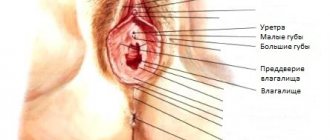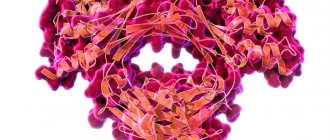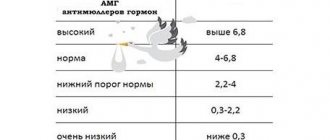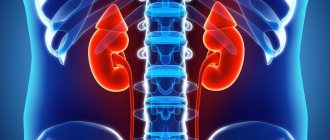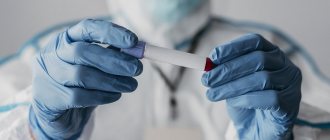The movement of sperm depends directly on the density of the sperm and the structure of the cells themselves. The speed and direction of movement of sperm depends on their tail.
One of the frequently asked questions of men who are faced with the problem of low-motile sperm in the spermogram is: “How to check sperm activity and how to increase sperm activity?” First of all, you should take a spermogram in compliance with all the requirements and recommendations of the doctor. This will allow you to get a reliable result and prescribe the correct treatment in a timely manner.
A classification has been adopted throughout the world that divides sperm motility into the following categories:
- Category A is the germ cells that move quickly along a straight or slightly curved path. Their movement speed is at least 25 µm/s. We can talk about good seminal fluid if the number of germ cells from category A is 32 percent or more.
- Category B - sperm with reduced mobility, but their movement is linear.
- Category C is spermatozoa that move in the form of oscillatory movements or in a small circle as a result of a violation of the structure of the neck and their tail.
- Category D is completely immobile germ cells. in some cases, the reason for their lack of movement may be prolonged abstinence from any type of ejaculation.
Mobility classification
Categories of sperm motility
The activity of male germ cells is determined by the amount of their movement in one second. During this time, a normal sperm moves more than half its size in length, which is about 0.025 mm. There are the following criteria for its mobility:
- Category A – the trajectory of movement is straight, the speed is normal (not less than 0.0025 mm/sec).
- Category B – movement is correct, straight, but slow (less than 0.0025 mm/s).
- Category C – movement of sperm around its axis or in a circle.
- Category D – sperm are immotile.
Causes
Sperm production is a complex mechanism that requires the normal state of testicular tissue, as well as the coordinated work of all internal secretion organs, and especially the hypothalamus and pituitary gland - glands located in the brain and controlling most of the endocrine processes and the process of spermatogenesis. Once sperm have formed and matured in the testicles, they accumulate in the epididymis and are then transported through the thin vas deferens, mixed with prostate secretions and ejaculated from the penis during orgasm. Problems at any stage of this process can provoke a decrease in the number of active sperm in the seminal fluid.
In addition to a significant drop in the number of sperm in semen, changes in their morphological structure may also occur, the nature of motility and functions may change
However, it should also be expected that the reason for the low concentration of sperm in semen will not be established; for this you need to take a spermogram.
What determines the motility of male germ cells?
It is not always possible to determine the cause of low mobility. In 30% of cases, an idiopathic form of asthenozoospermia is registered. There are known factors influencing the activity of sperm in the ejaculate:
- Reduced testosterone levels. People suffering from hypertension and excess weight encounter it. Testosterone synthesis also decreases with age.
- Increased temperature in the scrotum with varicocele (dilation of the veins of the vas deferens) or when wearing warm and thick underwear. The optimal temperature for sperm motility is 37 degrees; higher temperatures not only reduce motility, but also cause the formation of abnormal forms.
- Infections that penetrate the genital glands. These include smallpox, mumps, typhoid, influenza, and tuberculosis. In this case, the cause of infertility is a specific inflammation of the testicles.
- Sperm motility depends on proper nutrition. An insufficient amount of zinc, vitamins and microelements leads to disruption of the synthesis of protein structures of gametes, which leads to low sperm motility.
- Delayed ejaculation as a result of decreased libido (sexual desire). This occurs with alcohol abuse and smoking. Sexual desire decreases with age, as well as with diabetes.
- Promiscuous sex life not only reduces the quality of male reproductive cells, but also increases the risk of developing sexually transmitted diseases. Abstaining from sexual life leads to aging of sperm and a decrease in their motility.
- Gamete immobility can be caused by many factors. All of them are subject to correction before starting treatment. Many cases of low sperm motility are corrected by prescribing the necessary microelements and correcting nutrition.
Symptoms
The main symptom of a low sperm count is the inability to conceive a child. There may be no other obvious signs or symptoms. In some cases, an underlying medical condition such as an inherited chromosomal abnormality, hormonal imbalance, enlarged testicular veins, or a condition that blocks the passage of sperm may cause signs and symptoms. Symptoms of low sperm count may include:
- Problems with sexual function, such as low sex drive or difficulty maintaining an erection (erectile dysfunction)
- Pain, swelling, or swelling in the testicular area
- A small amount of facial and body hair or other signs of abnormalities related to chromosomes or hormones
When to see a doctor
Contact your doctor if you have been unable to conceive after a year of regular, unprotected sex, or sooner if you have any of the following:
- Problems with erection or ejaculation, low sex drive, or other problems with sexual function
- Pain, discomfort, swelling or swelling in the testicular area
- Have had problems with your testicles, prostate or sexual function in the past
- There were operations in the groin, testicles, penis, scrotum
Degrees of asthenozoospermia
There are 3 degrees of impaired sperm motility, which determines the severity of the disease and the choice of treatment tactics:
- Mild degree - motility retains a sufficient number of sperm of categories A and B (50%) for conception. The speed of movement is determined one hour after ejaculation. Achieving normal activity is achieved by adjusting lifestyle and nutrition.
- Medium degree - an hour after ejaculation, 70% of sperm become immobile. At this stage, they resort to prescribing bioactive pharmacological agents.
- Severe degree - 80–90% of sperm consists of immobile, atypical sperm. The patient faces complex treatment.
The classification was proposed by WHO and is used to diagnose male infertility in all clinics around the world. The degrees are determined based on the results of spermatoscopy.
Preparing to visit the doctor
You should start with your family doctor or internist. However, he may refer you to a fertility specialist.
Here is some information to help you prepare for your doctor's visit.
what can you do
- Find out about any restrictions you may need before visiting your doctor. When you make an appointment with your doctor, ask if there is anything you should do in advance, such as abstaining from ejaculation for a certain time or stopping taking certain medications.
- Write down all the symptoms you have, including those that you think are not related to the reason you came to the doctor.
- Write down basic information about yourself, including major stress or recent life changes.
- Find out if there have been cases of infertility in your family. Having a blood relative, such as your father or brother, with infertility problems or other reproductive problems may be the reason for your low sperm count.
- Ask your parents if you had undescended testes or other problems at birth or in early childhood.
- Make a list of all the medications, vitamins, and supplements you take.
- Take your partner with you. Even if your sperm count is low, your partner may also need to be tested to see if she has any problems that are preventing fertilization. Going to the doctor with your partner will also help you remember all your doctor's orders or ask questions that you might not have thought of.
- Write down all the questions you want to ask your doctor.
Some basic questions to ask your doctor include:
- What do you think is the reason for my low sperm count?
- Apart from the most likely reason, what are other possible reasons why my partner and I are unable to conceive?
- What tests do I need to take?
- Should my partner also be tested?
- What treatment is there to increase sperm count? Which one do you recommend?
- Are there any restrictions that I must abide by?
- When should we consider alternative options such as sperm donation or adoption?
- Are there any brochures or other literature I can take home? What sites do you recommend visiting?
Feel free to ask additional questions during your appointment.
What to expect from your doctor
Your doctor may ask you the following questions:
- At what age did you start puberty?
- Have you had a vasectomy or vasectomy reversal?
- Do you use illegal drugs such as marijuana, cocaine or anabolic steroids?
- Have you been exposed to toxins such as chemicals, pesticides, radiation or lead on a regular basis?
- Are you currently taking any medications, including dietary supplements?
- Have you had undescended testicles in the past?
Treatment of insufficient sperm motility
The extent of medical intervention for asthenozoospermia varies and depends on the causes. Varicocele cannot be treated without surgery. But this is an extreme case. In the absence of pathologies, it is often enough to correct spermatogenesis, eliminate bad habits and add necessary substances to the diet. The male reproductive system cannot function properly without the necessary substances: L-carnitine, antioxidants, vitamins E and B9, zinc and selenium. The production of normal sperm is hampered by tight, tight-fitting underwear. Men with poor sperm motility are advised not to take hot baths or visit saunas and steam baths. Experts recommend wearing loose clothing that does not restrict movement. Preference is given to cotton underwear.
How to avoid low sperm motility?
To ensure a fruitful conception, experts recommend adhering to the following recommendations:
- Overheating of the testicles reduces sperm motility, so it is recommended to refrain from baths, saunas, and heated car seats.
- The amount of alcohol consumed should not exceed 50 ml for strong drinks or 200 ml of dry wine.
- It is better to avoid smoking completely, since nicotine destroys essential vitamins, microelements and bioactive substances.
- Physical activity activates testosterone production. To do this, 30–40 minutes of exercise or swimming three times a week is enough.
- Stress, as the main factor in reducing blood circulation in the genitals, should be eliminated from your life as much as possible.
Low mobility can be treated in simple ways that are accessible to everyone. You just need to follow the suggested recommendations for 4–6 months.
Additional tests and diagnostics
Having determined a low level of sperm motility, the urologist must understand the cause of the pathology. For this purpose the following are assigned:
- Pelvic ultrasound ,
including ultrasound of the genital organs - ultrasound of the prostate, ultrasound of the testicles involved in the process of spermatogenesis. An ultrasound examination with Doppler shows all physical problems - tumors, blood flow disorders, etc., if any. - Analysis for sex hormones
. Hormonal imbalances are one of the most common causes of decreased sperm activity. - Smear for genital infections
. It is advisable to do an extended analysis. - Biochemical blood test
, revealing a wide range of problems in the body.
This is the minimum set of tests that a man who wants to become a father will have to pass.
Pharmacological correction of asthenozoospermia
Low sperm motility may be the cause of failed conceptions. In every third man suffering from infertility, no reason was found for insufficient activity of germ cells. Therefore, it is possible to increase the ability of sperm to fertilize using means whose effectiveness has been proven. In particular, clinical studies have shown the effectiveness of Speroton for asthenozoospermia - taking the drug for 1-3 months increased sperm motility, their number in semen and increased the number of sperm with normal structure.
Speroton 5 g No. 30 sachet pack
Sperm motility is the main factor influencing the fertilization of the egg. Therefore, stimulating the activity of male germ cells with Speroton gives a real chance for the birth of a baby without the use of artificial fertilization methods.
Risk factors
A number of risk factors are associated with low sperm count and other problems that can cause low sperm count. These include:
- Smoking tobacco
- Alcohol consumption
- Use of certain illicit drugs
- Overweight
- Having certain infections in the past or present
- Exposure to toxins
- Overheating of the testicles
- Testicular injury
- Being born with a fertility disorder or having a blood relative with a fertility disorder
- Having certain medical conditions, including tumors and chronic diseases
- Cancer treatment, such as radiation
- Use of certain medications
- Previous vasectomy or major abdominal or pelvic surgery
- Undescended testicles in the past
